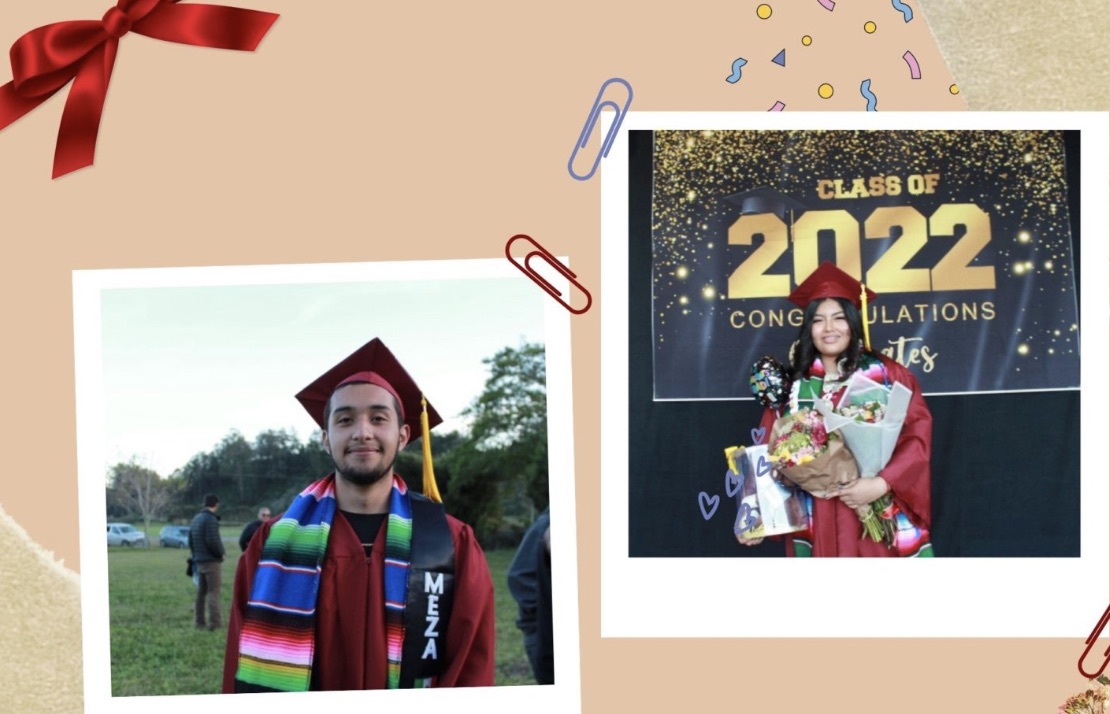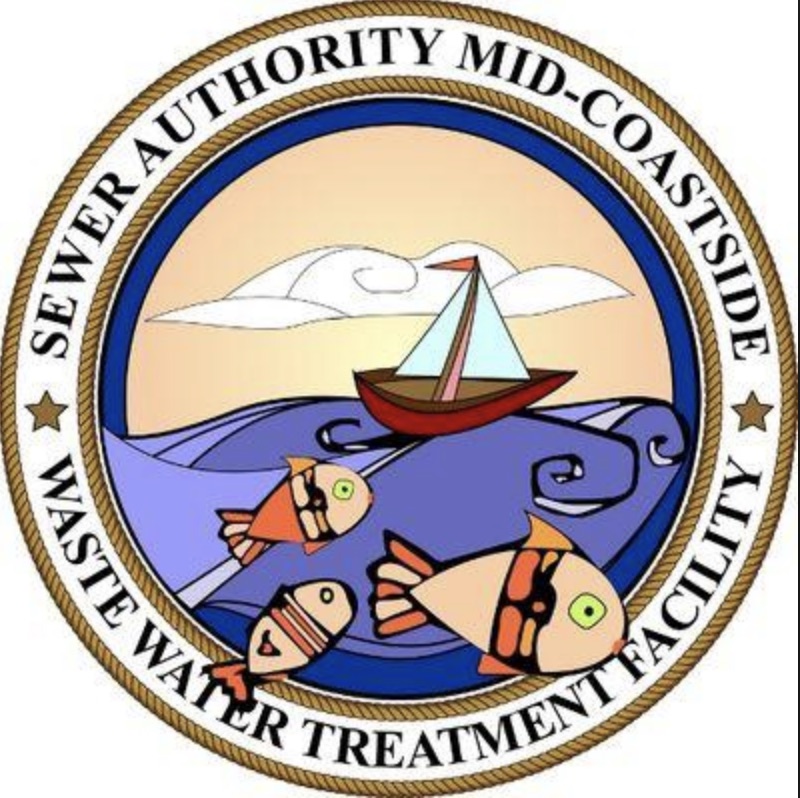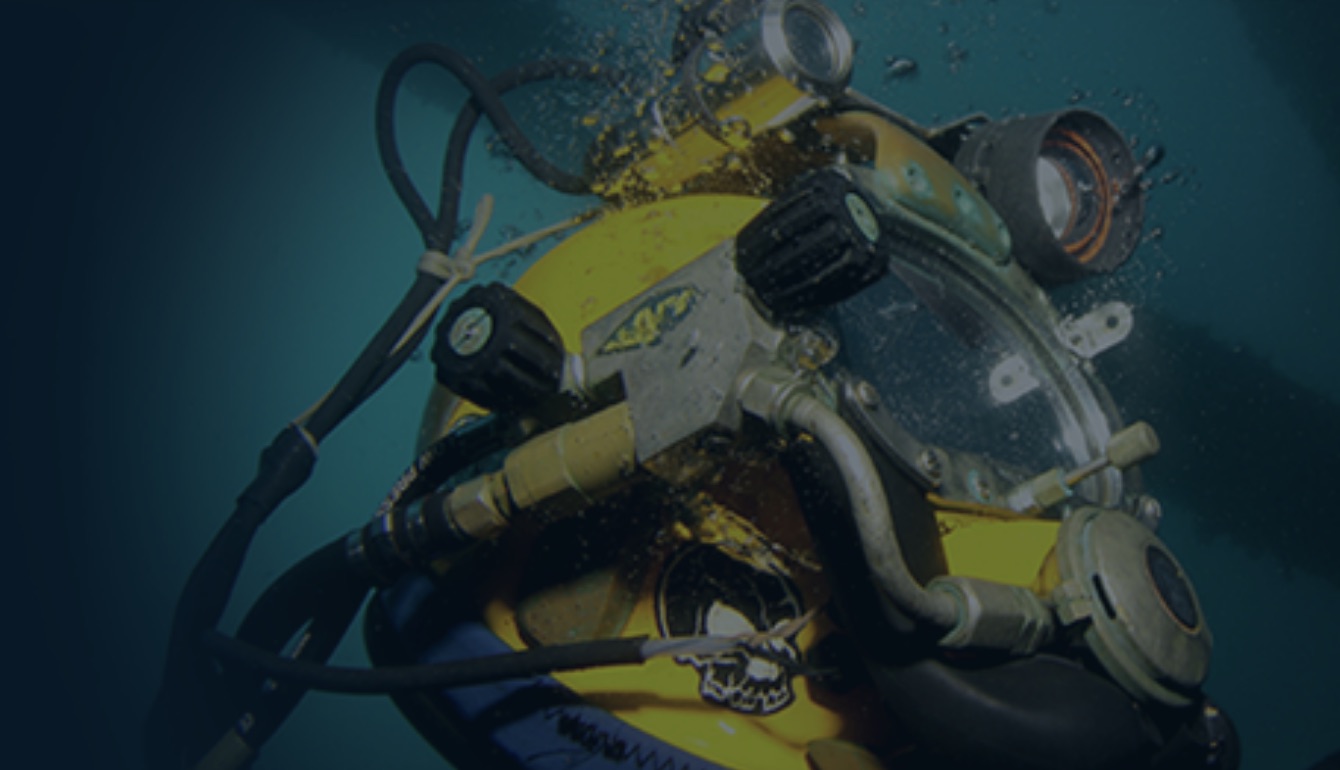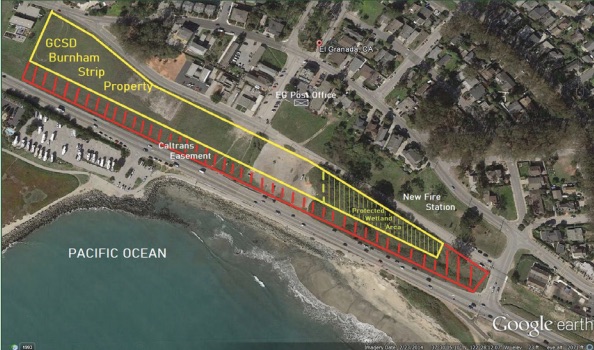|
Getting your Trinity Audio player ready...
|
Donate to Puente.

What a difference three years can make. In 2019, when she was a high school sophomore, it seemed to Mairol Hernandez that college was something for other people. The education system in the United States was foreign to her family, although they encouraged her to do her best in school, she was not fully aware of the different educational pathways after high school or even how to begin the process.
“It was the same with the SAT — I didn’t know I could take the SAT,” she recalls. “I thought it was only for, like, ‘the smart kids’, (quote unquote). So when I realized I could take it, I was flabbergasted.” Most often, and due to various life experiences, youth face doubts about what they can or cannot do academically. Offering support services and resources at an early age can help demystify some of those doubts and help youth work through their fears and become strong advocates for themselves.
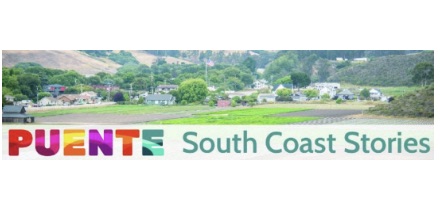
Not only did Mairol take the SAT, she was accepted into three colleges – including her first choice, San Francisco State. She was also awarded several academic scholarships when she graduated from Pescadero High School in May, which came as a nice surprise. But the biggest surprise to Mairol herself is how much she’s changed from when she was a young, introverted kid, hesitant about taking risks and trying new things. Her attitude now? “I just think, what’s the worst thing that could happen?”
Edgard Cervantes is headed to Cañada College this fall for two years before he transfers into a prestigious architecture program at University of San Francisco, which has already accepted him. But before his college adventure begins, he gets to spend this summer completing a paid internship at Bartos Architecture Inc.
“When I was younger, I would often say I wanted to be an architect. But I didn’t realize there’s many different kinds of career fields in the architecture industry – interior design, landscape, etc.. I know there’s a lot more than that, too,” he says. “As I grew older, I was able to access more information and get a better understanding on what it meant to be an architect. I had no idea where this journey would take me, yet I can say with certainty that it was definitely not what I expected. Nevertheless I am happy to be where I am and to have met all these amazing people who helped me through my journey so far.”
Both of these recent high school graduates are in the first-ever cohort of Puente’s IDEA program, an ambitious and transformative three-year experience that supports incoming high school sophomores all the way to the cusp of adulthood. IDEA (Individual Development: Economic and Academic) wraps students in a suite of supportive academic programs, life skills-building workshops, and a rigorous check-in system that lasts all school year. During the summers, IDEA youth get to pursue paid internships that relate directly to their blossoming professional areas of interest. IDEA follows each cohort until six months following high school graduation.
The first cohort of 11 IDEA graduates just wrapped up their time in high school, and Puente is finally able to take stock of just how far they’ve come. “Three years of hard work meant something to these youths. In retrospect, we didn’t see it throughout the year. But we can see it now. And having that validated is so rewarding – for them and for us,” says Lizeth Andrea Hernandez, Education Director for Puente.
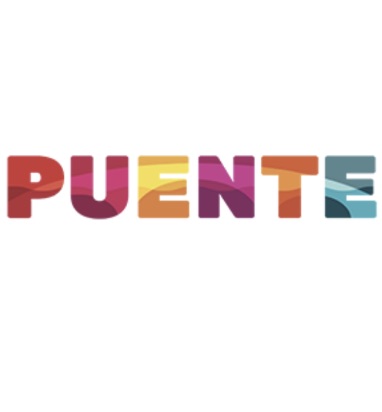
IDEA is a hands-on labor of love run by three Puente staff members and the counselor at Pescadero High. The program has three components: the paid summer internships; one-on-one case management sessions with program staff, who have regular check-ins with each student; and a cohort meetup every three months where students participate in sessions led by the Education team who partner with organizations like San Mateo Jobs for Youth, San Mateo Credit Union as well as guest speakers in fields related to the cohort’s interests. Students began to explore transferable skills, such as time management, resume building, professional development, networking… basically, preparing students to thrive as young adults.
“The closer they get to senior year, the more we start talking about life after high school,” explains Hernandez.
The IDEA program grew out of a 2018 grant from PropelNext, an initiative that bolsters youth programming in disadvantaged areas. From there, Puente embarked on a process of building an entirely new program model.
It also split its wildly successful summer youth employment program, which was created for youth aged 14-21, into two separate summer programs going forward: one for students aged 14-18, and one for those aged 18-22.
Those two summer-only programs now have very different strategies. The YES program (Youth Enrichment Series) enrolls younger students in summer workshops to impart important skills which will help them cope in the real world: practical things like managing credit, budgeting, Financial Aid, time management, responsibility and communication. At the end of the summer, youth participants receive a financial scholarship based on their participation.
The newly-renamed summer program for older students, YPEP (Young Professionals Employment Program) continues and expands the tradition of connecting youth like Edgard and Mairol with paid summer internships that directly correspond to their professional interests.
Puente’s redesign of the youth program kicked off with Edgard, Mairol and a group of their 10th grade classmates in 2019. For a time, from August 2019 to March 2020, everything was going swimmingly: “We were seeing them every two weeks in person at the high school,” recalls Hernandez.
Guess what happened next.
When COVID came along
When COVID-19 swept the globe, it cut off the possibility of in-person field trips, which had been a perk of the IDEA program, as well as in-person visits at the school. Instead, the program went online. Going remote was “drastically different” from the type of programming the students were used to, says Hernandez.
The IDEA program is built to support academic excellence, and Puente staff started seeing some issues emerge.
“When COVID hit, we saw a common trend across all of our students, but mostly our high-performing students, that they were suffering academically. And so we had to provide tutoring remotely for those students. So we were able to track those types of trends,” explains Hernandez.
But the COVID era has also provided some significant benefits to the IDEA program. For one thing, the newer cohorts have found it very convenient to hop into an evening workshop that fits with their school schedules and other online studies they are required to do.
Being remote also opens up a vastly greater range of possibilities for programming. Puente Education Associate, Monica Resendiz, was able to recruit all kinds of fascinating professionals to talk to the youth about what they do for work, and those career details left students “intrigued and excited,” she says.
One of Puente’s most popular workshops on financial literacy now comes remotely via partners at the San Mateo Credit Union. “We’re able to grab more collaborations with ‘over the hill’ organizations, something that was difficult prior to the pandemic.” says Resendiz.
There are significant interpersonal benefits as well. “The way the IDEA program is structured, we’re involved in their lives all year round. Prior to the pandemic, we weren’t as informed, especially when it comes to why students make the decisions that they do for college or what they’re going to do after high school,” says Hernandez. “We have so much more time with them now. We got to know more about students’ family dynamics, for example.”
Sometimes students would text us after work hours, and that was totally fine. “They were telling us that they were feeling anxiety. The fact that they felt comfortable reaching out to us actually speaks to the bonds that we’ve built with the youth that I don’t think we expected to become so deep,” adds Hernandez.
Resendiz agrees. “I almost thought, well, I’m becoming a nuisance for them because I’m just always calling,” she laughs. “But a lot of the students have said they really appreciated that.”
The IDEA program has been redesigned to incorporate those new practices going forward.
Ready for what’s next
The IDEA program is intended to prepare youth for whatever they decide to do after high school, whether that’s four-year college, community college, pursuing a vocational path, or entering the workforce full-time.
As Edgard and Mairol have both discovered, the best solution is to be flexible. After gaining admission to a four-year university, they both opted to defer enrollment for two years and stay home, save money, catch up on school credits, and work.
Edgard realized he couldn’t swing the $75,000-a-year price tag for tuition, room and board at University of San Francisco, even with financial aid. Instead, he’s attending Cañada College in the fall, where he will gain an introduction to architectural drafting and software design. He’ll also take calculus and swimming. “That’s out of my comfort zone,” he laughs. He plans to transfer to USF two years from now.
He hopes his summer internship with an architecture firm might lead to a job down the road. Either way, he’s working hard this summer – not just as an intern, but at the gas station in Pescadero on weekends, for extra cash.
“I graduated with $8,000 in scholarships, and that was really helpful. I will save up as much as I can and put it in a savings account, just start saving up from now on,” he says. He plans to continue working at the gas station on weekends during the school year.
Edgard is no stranger to hard work. When Pescadero schools closed for COVID, at first he walked to Puente every day to sit under a tree and take classes online because his house did not have reliable WIFI, until he was able to get a bicycle. Recently, his family was evicted, and they had to move to an apartment farther away from his school. Edgard raced to get his drivers’ license so he could get to classes.
“I know it’s going to take a lot of work and sacrifices to find success. All my teachers have told me that. And anything that will help me get closer to my goal, I’m focusing on,” he says.
Mairol will also head to Cañada College in the fall to begin accruing credits before she transfers. “I’ll be getting my AA [Associate degree] in Latino/Latina studies. And then when I complete that, I will transfer to San Francisco State and get my B.A. in Latino/Latina studies as well,” she says, outlining her plan.
Mairol has a strong interest in Spanish/English interpretation as a possible career path. For years, she’s been called on to informally translate between her monolingual Spanish speaking-peers and anglophone teachers in the classroom, and during school events.
“During the pandemic, I came to the conclusion I should do something in interpretation because I’ve done it for the school. I’ve done it for the community,” she says. “I’m not that good at it yet, but I’m going to get good at it in order to help out my community.”
Mairol has participated in Puente youth programs every summer since the age of 14. As a child, she describes herself as being socially awkward due to growing up away from other children her age. Suddenly as a Puente youth, she was thrust into a variety of contexts that transformed her personality – starting with a summer spent interning at a senior center in Half Moon Bay. “That experience helped me learn how to deal with people that I don’t know personally,” she reflects.
Now she thrives in social situations – not only as an interpreter, but as a leader. She recently led her high school volleyball team on to a series of victories, culminating in a league championship. This summer, she’s working at Pie Ranch, where she leads events with children and adults, doing cooking workshops. She also assembles food subscription boxes and interacts with the farm animals. “The animals are a lot of fun. And it gives me a boost of serotonin, because it’s just what I need after dealing with a bunch of kids sometimes!” she laughs.
The exit interviews
Day by day, week by week, Puente’s education staff surfed COVID’S “new normal”
alongside the first, experimental IDEA cohort which started the program together in person, and then spent the next school year (and summer) in their homes. It was a group that struggled.
At a time when their isolation was acute, the IDEA connection meant more to the youth than Hernandez and Resendiz even realized. “I feel like we went in thinking, ‘Gosh, we’ve changed the whole model. We’re going virtual. Can these youth even get any skills?” says Resendiz.
But recently, Puente staff conducted exit interviews with the 11 students in the pioneer cohort – and realized just how effective their hands-on approach had been, and how much knowledge the youth had retained.
“I was shocked that they really left with all the information they were able to get from us, in terms of financial stability, college planning, talking to their parents, and having us talk to their parents. It was very moving for me during the exit interviews. I left there thinking, ‘Wow. I did my job,’” reflects Resendiz.
The exit interviews were a morale boost and an important data point for Hernandez and her team. The number of overall youth participants enrolled in the IDEA program – a few dozen – is rather low when compared with the quantitative impact of, say, a Puente-led food distribution event, or the number of adults Puente enrolls in Medi-Cal each year, points out Hernandez. “And internally, we would have these conversations about, are we doing enough?”
The answer is a ringing yes – according to the students themselves.
“When we got to do these exit interviews with the youth, I think for the first time it really hit us that it’s not a question of quantity – it was the quality of the service that we were providing. And so to have youth, for example, quote back to us something we said three years ago that stuck with them, that was super chilling for some of us to realize: ‘Wow. I’m over here nagging you and you actually took it to heart!’” laughs Hernandez.
The IDEA program has never been just a program. It’s a commitment from everyone. The adults who manage it get the chance to see something in a young, developing teen that they may not even see in themselves yet, and then to nurture it. These are some of the most significant years in a young person’s life, where their brains fully mature and they form their ethical and moral framework for operating in the world.
For the youth, knowing they were on a path to success made a world of difference.
“One of my youth told me, ‘You were like my coach! You coached me through to make sure that I was able to complete all my tasks,” reports Resendiz with a smile. “One said, ‘I really appreciated that you checked in with me because I would forget that I needed to pay more attention to a certain class, or I need to make up work. It’s almost like you were reminding me I could do it. That somebody was there to hold some accountability for me.”
Thanks to the generosity of many donors, Puente can continue providing supportive academic programs, life skills-building workshops, and scholarships for youth every year in June. If you would like to make a contribution to youth scholarships, please click the donate button today.
Jóvenes pioneros del programa IDEA se preparan para el mundo
Qué diferencia pueden hacer tres años. En 2019, cuando estaba en segundo año de secundaria, a Mairol Hernández le parecía que la universidad era algo para otras personas. El sistema educativo en los Estados Unidos era ajeno a su familia, aunque la alentaron a dar lo mejor de sí en la escuela, ella no estaba completamente al tanto de los diferentes caminos educativos después de la escuela secundaria o incluso cómo comenzar el proceso.
“Pasaba lo mismo con el SAT (exámenes de aptitud para entrar a las universidades): no sabía que podía rendir el SAT”, recuerda. “Pensé que era solo para, como, ‘los chicos/chicas inteligentes’, (entre comillas). Entonces, cuando me di cuenta de que podía tomar los exámenes, me quedé sorprendida”. La mayoría de las veces, y debido a diversas experiencias de vida, los jóvenes enfrentan dudas sobre lo que pueden o no hacer académicamente. Ofrecer servicios y recursos de apoyo a una edad temprana puede ayudar a desmitificar algunas de esas dudas y ayudar a los jóvenes a superar sus miedos y poder abogar por sí mismos.
Mairol no solo tomó el SAT, sino que fue aceptada en tres universidades, incluida su primera opción, San Francisco State. También recibió varias becas académicas cuando se graduó de Pescadero High School en mayo, lo que fue una agradable sorpresa. Pero la mayor sorpresa para la propia Mairol es cuánto ha cambiado desde que era una niña pequeña e introvertida, que dudaba en tomar riesgos y probar cosas nuevas. ¿Su actitud ahora? “Solo pienso, ¿qué es lo peor que podría pasar?”
Edgard Cervantes se dirige a Cañada College este otoño por dos años antes de transferirse a un prestigioso programa de arquitectura en la Universidad de San Francisco, que ya lo ha aceptado. Pero antes de que comience su aventura universitaria, pasa este verano completando una práctica profesional en Bartos Architecture Inc.
“Cuando era más joven, a menudo decía que quería ser arquitecto. Pero no me di cuenta de que hay muchos tipos diferentes de campos profesionales en la industria de la arquitectura: diseño de interiores, paisajismo, etc. Sé que también hay mucho más que eso”, dice. “A medida que fui creciendo, pude acceder a más información y comprender mejor lo que significa ser arquitecto. No tenía idea de a dónde me llevaría este viaje, pero puedo decir con certeza que definitivamente no era lo que esperaba. Sin embargo, estoy feliz de estar donde estoy y de haber conocido a todas estas personas increíbles que me ayudaron en mi viaje hasta ahora”.
Estos dos recién graduados de la escuela secundaria están en la primera cohorte del programa IDEA de Puente, una experiencia ambiciosa y transformadora de tres años que apoya a los estudiantes de segundo año de la escuela secundaria que ingresan hasta la cúspide de la edad adulta. IDEA (Desarrollo Individual: Económico y Académico) envuelve a los estudiantes en un conjunto de programas académicos de apoyo, talleres de desarrollo de habilidades para la vida y un riguroso sistema de registro que dura todo el año escolar. Durante los veranos, los jóvenes de IDEA obtienen prácticas profesionales que se relacionan directamente con sus florecientes áreas profesionales de interés. IDEA sigue a cada cohorte hasta seis meses después de la graduación de la escuela secundaria.
El primer grupo de 11 graduados de IDEA acaba de terminar su tiempo en la escuela secundaria, y Puente finalmente puede hacer un balance de lo lejos que han llegado. “Tres años de arduo trabajo significaron algo para estos jóvenes. En retrospectiva, no lo vimos durante todo el año. Pero podemos verlo ahora. Y tener eso validado es muy gratificante, para ellos y para nosotros”, dice Lizeth Andrea Hernandez, Directora de Educación de Puente.
IDEA es una labor práctica de amor dirigida por tres miembros del personal de Puente y la consejera de Pescadero High School. El programa tiene tres componentes: las prácticas profesionales; juntas regulares con cada estudiante; y una reunión del grupo cada tres meses donde los estudiantes participan en sesiones dirigidas por el equipo de Educación que se asocia con organizaciones como San Mateo Jobs for Youth, San Mateo Credit Union, así como oradores invitados en campos relacionados con los intereses de la grupo. Los estudiantes comenzaron a explorar habilidades transferibles, como manejar su tiempo eficientemente, la creación de currículums, el desarrollo profesional, la creación de redes sociales… básicamente, preparar a los estudiantes para prosperar como adultos jóvenes.
“Cuanto más se acercan al último año, más comenzamos a hablar sobre la vida después de la escuela secundaria”, explica Hernández.
El programa IDEA surgió de una subvención de 2018 de PropelNext, una iniciativa que refuerza la programación para jóvenes en áreas rurales. A partir de ahí, Puente se embarcó en un proceso de construcción de un modelo de programa completamente nuevo.
También dividió su exitoso programa de empleo de verano para jóvenes, que fue creado para jóvenes de 14 a 21 años, en dos programas de verano separados en el futuro: uno para estudiantes de 14 a 18 años y otro para aquellos de 18 a 22 años.
Esos dos programas solo son de verano y tienen estrategias muy diferentes. El programa YES (Serie de Enriquecimiento para Jóvenes) inscribe a estudiantes más jóvenes en talleres de verano para impartir habilidades importantes que los ayudarán a desenvolverse en el mundo real: aspectos prácticos como administración de crédito, elaboración de presupuestos, ayuda financiera, administración del tiempo, responsabilidad y comunicación. Al final del verano, los jóvenes participantes reciben una beca económica en función de su participación.
El nuevo programa de verano para estudiantes mayores, YPEP (Programa de Empleo para Jóvenes Profesionales) continúa y amplía la tradición de conectar a jóvenes como Edgard y Mairol con tener prácticas profesionales de verano que corresponden directamente a sus intereses profesionales.
El rediseño del programa para jóvenes de Puente comenzó con Edgard, Mairol y un grupo de sus compañeros de décimo grado en 2019. Durante un tiempo, desde agosto de 2019 hasta marzo de 2020, todo iba sobre ruedas: “Los veíamos cada dos semanas en persona en la escuela secundaria”, recuerda Hernández.
Adivina lo que pasó después.
Cuando llegó el COVID
Cuando COVID-19 barrió el mundo, cortó la posibilidad de realizar excursiones en persona, que habían sido una ventaja del programa IDEA, así como visitas en persona a la escuela. En cambio, el programa se puso en línea. Ir a distancia fue “drásticamente diferente” del tipo de programación al que estaban acostumbrados los estudiantes, dice Hernández.
El programa IDEA está diseñado para apoyar la excelencia académica, y el personal de Puente comenzó a ver surgir algunos problemas.
“Cuando llegó COVID, vimos una tendencia común en todos nuestros estudiantes, pero principalmente en nuestros estudiantes de alto rendimiento, que estaban sufriendo académicamente. Y entonces tuvimos que brindar tutoría de forma remota para esos estudiantes. Entonces pudimos rastrear ese tipo de tendencias”, explica Hernández.
Pero la era COVID también ha brindado algunos beneficios significativos al programa IDEA. Por un lado, a los frupos más nuevos les ha resultado muy conveniente participar en un taller que se ajuste a sus horarios escolares y otros estudios en línea que deben realizar.
Ser remoto también abre una gama mucho mayor de posibilidades para la programación. La asociada de educación de Puente, Mónica Resendiz, pudo reclutar todo tipo de profesionales fascinantes para hablar con los jóvenes sobre lo que hacen en el trabajo, y esos detalles profesionales dejaron a los estudiantes “intrigados y emocionados”, dice.
Uno de los talleres más populares de Puente sobre educación financiera ahora se realiza de forma remota a través de socios en San Mateo Credit Union. “Podemos obtener más colaboraciones con organizaciones ‘sobre la colina’, algo que era difícil antes de la pandemia”. dice Reséndiz.
También hay importantes beneficios interpersonales. “Por la forma en que está estructurado el programa IDEA, estamos involucrados en sus vidas durante todo el año. Antes de la pandemia, no estábamos tan informados, especialmente cuando se trata de por qué los estudiantes toman las decisiones que toman para la universidad o qué harán después de la escuela secundaria”, dice Hernández. “Tenemos mucho más tiempo con ellos ahora. Llegamos a saber más sobre la dinámica familiar de los estudiantes, por ejemplo”.
A veces, los estudiantes nos enviaban mensajes de texto después de las horas de trabajo, y eso estaba totalmente bien. “Nos decían que sentían ansiedad. El hecho de que se sintieran cómodos comunicándose con nosotros en realidad habla de los lazos que hemos construido con los jóvenes que no creo que esperábamos que fueran tan profundos”, agrega Hernández.
Reséndiz está de acuerdo. “Casi pensé, bueno, me estoy convirtiendo en una molestia para ellos porque siempre estoy llamando”, se ríe. “Pero muchos de los estudiantes han dicho que realmente aprecian los recordatorios”.
El programa IDEA ha sido rediseñado para incorporar esas nuevas prácticas en el futuro.
Listos para lo que sigue
El programa IDEA tiene como objetivo preparar a los jóvenes para lo que sea que decidan hacer después de la escuela secundaria, ya sea una universidad de cuatro años, un colegio comunitario, seguir un camino vocacional o ingresar a la fuerza laboral a tiempo completo.
Como han descubierto Edgard y Mairol, la mejor solución es ser flexible. Después de obtener la admisión a una universidad de cuatro años, ambos optaron por diferir la inscripción por dos años y quedarse en casa, ahorrar dinero, ponerse al día con los créditos escolares y trabajar.
Edgard se dio cuenta de que no podía pagar el precio de $75,000 al año por matrícula, alojamiento y comida en la Universidad de San Francisco, incluso con ayuda financiera. En cambio, asistirá a Cañada College en otoño, donde obtendrá una introducción al dibujo arquitectónico y al diseño de software. También tomará cálculo y natación. “Eso está fuera de mi zona de confort”, se ríe. Planea transferirse a la USF dentro de dos años.
Espera que su pasantía de verano en una firma de arquitectura lo lleve a un trabajo en el futuro. De cualquier manera, está trabajando duro este verano, no solo como pasante, sino también en la gasolinera de Pescadero los fines de semana, para ganar dinero extra.
“Me gradué con $8,000 en becas y eso fue muy útil. Ahorraré todo lo que pueda y lo pondré en una cuenta de ahorros, solo comience a ahorrar de ahora en adelante”, dice. Planea seguir trabajando en la gasolinera los fines de semana durante el año escolar.
Edgard no es ajeno al trabajo duro. Cuando las escuelas de Pescadero cerraron por COVID, al principio caminaba a Puente todos los días para sentarse debajo de un árbol y tomar clases en línea porque su casa no tenía WIFI confiable, hasta que pudo conseguir una bicicleta. Recientemente, su familia fue desalojada y tuvieron que mudarse a un apartamento más alejado de su escuela. Edgard se apresuró a obtener su licencia de conducir para poder asistir a clases.
“Sé que va a tomar mucho trabajo y sacrificios encontrar el éxito. Todos mis profesores me han dicho eso. Y me estoy enfocando en cualquier cosa que me ayude a acercarme a mi meta”, dice.
Mairol también se dirigirá a Cañada College en el otoño para comenzar a acumular créditos antes de transferirse. “Obtendré mi AA [título de asociado] en estudios latinos/latinas. Y luego, cuando complete eso, me transferiré a San Francisco State University y obtendré mi B.A. en estudios latinos/latinas también”, dice, delineando su plan.
Mairol tiene un gran interés en la interpretación español/inglés como una posible carrera profesional. Durante años, ha sido llamada para traducir informalmente entre sus compañeros monolingües de habla hispana y maestros anglófonos en el salón de clases y durante eventos escolares.
“Durante la pandemia, llegué a la conclusión de que debería hacer algo en interpretación porque lo he hecho para la escuela. Lo he hecho por la comunidad”, dice. “Todavía no soy tan bueno en eso, pero voy a ser bueno en eso para ayudar a mi comunidad”.
Mairol ha participado en los programas juveniles de Puente todos los veranos desde los 14 años. Cuando era niña, se describe a sí misma como socialmente incómoda debido a que creció lejos de otros niños de su edad. De repente, como joven de Puente, se vio envuelta en una variedad de contextos que transformaron su personalidad, comenzando el verano pasado con una práctica profesional trabajando con personas mayores en Half Moon Bay. “Esa experiencia me ayudó a aprender a tratar con personas que no conozco personalmente”, reflexiona.
Ahora prospera en situaciones sociales, no solo como intérprete, sino también como líder. Recientemente llevó a su equipo de voleibol de la escuela secundaria a una serie de victorias, que culminaron en un campeonato de liga. Este verano está trabajando en Pie Ranch, donde lidera eventos con niños y adultos, realizando talleres de cocina. También arma cajas de suscripción de alimentos e interactúa con los animales de la granja. “Los animales son muy divertidos. ¡Y me da un impulso de serotonina, porque es justo lo que necesito después de tratar con un montón de niños a veces!” ella ríe.
Las entrevistas de salida
Día a día, semana a semana, el personal educativo de Puente surfeó la “nueva normalidad” de COVID junto con el primer grupo de IDEA que comenzó el programa juntos en persona y luego pasó el próximo año escolar (y el verano) en sus hogares. Era un grupo que luchaba.
En un momento en que su aislamiento era agudo, la conexión de IDEA significó más para los jóvenes de lo que Hernández y Reséndiz se dieron cuenta. “Siento que entramos pensando, ‘Dios, hemos cambiado todo el modelo. Nos estamos volviendo virtuales. ¿Pueden estos jóvenes incluso obtener alguna habilidad? dice Reséndiz.
Pero recientemente, el personal de Puente realizó entrevistas de salida con los 11 estudiantes de la cohorte pionera y se dieron cuenta de cuán efectivo había sido su enfoque práctico y cuánto conocimiento habían retenido los jóvenes.
“Me sorprendió que realmente se fueran con toda la información que pudieron obtener de nosotros, en términos de estabilidad financiera, planificación universitaria, hablar con sus padres y hacernos hablar con sus padres. Fue muy conmovedor para mí durante las entrevistas de salida. Me fui de allí pensando, ‘Wow. Hice mi trabajo’”, reflexiona Resendiz.
Las entrevistas de salida fueron un impulso moral y un punto de datos importante para Hernández y su equipo. La cantidad total de participantes jóvenes inscritos en el programa IDEA (unas pocas docenas) es bastante baja en comparación con el impacto cuantitativo de, por ejemplo, un evento de distribución de alimentos dirigido por Puente, o la cantidad de adultos que Puente inscribe en Medi-Cal cada año. , señala Hernández. “E internamente, tendríamos estas conversaciones sobre, ¿estamos haciendo lo suficiente?”
La respuesta es un rotundo sí, según los propios estudiantes.
“Cuando llegamos a hacer estas entrevistas de salida con los jóvenes, creo que por primera vez nos dimos cuenta de que no se trata de una cuestión de cantidad, sino de la calidad del servicio que brindamos. Y entonces, para que los jóvenes, por ejemplo, nos citen algo que dijimos hace tres años que se quedó con ellos, fue súper escalofriante para algunos de nosotros darnos cuenta: ‘Wow. ¡Estoy aquí regañandote y realmente me hicistes caso!’”, se ríe Hernández.
El programa IDEA nunca ha sido solo un programa. Es un compromiso de todos. Los adultos que lo apoyan tienen la oportunidad de ver algo en un adolescente joven en desarrollo que tal vez ni siquiera vean en sí mismos todavía . Estos son algunos de los años más significativos en la vida de un joven, donde sus cerebros maduran completamente y forman su marco ético y moral para operar en el mundo.
Para los jóvenes, saber que estaban en el camino hacia el éxito marcó una gran diferencia.
“Uno de los jóvenes me dijo: ‘¡Eres como mi mentora! Me asesoraste para asegurarte de que pudiera completar todas mis tareas”, informa Resendiz con una sonrisa. “Uno dijo: ‘Realmente aprecio que me hayas consultado porque olvidaría que necesitaba prestar más atención a cierta clase, o necesito recuperar el trabajo’. Es casi como si me estuvieras recordando que puedo hacerlo. Que alguien estaba allí para responsabilizarme por mí”.
Gracias a la generosidad de muchos donantes, Puente puede continuar brindando programas académicos de apoyo, talleres de desarrollo de habilidades para la vida y becas para jóvenes todos los años en junio. Si desea hacer una contribución a las becas para jóvenes, haga clic en el botón de donar hoy.


